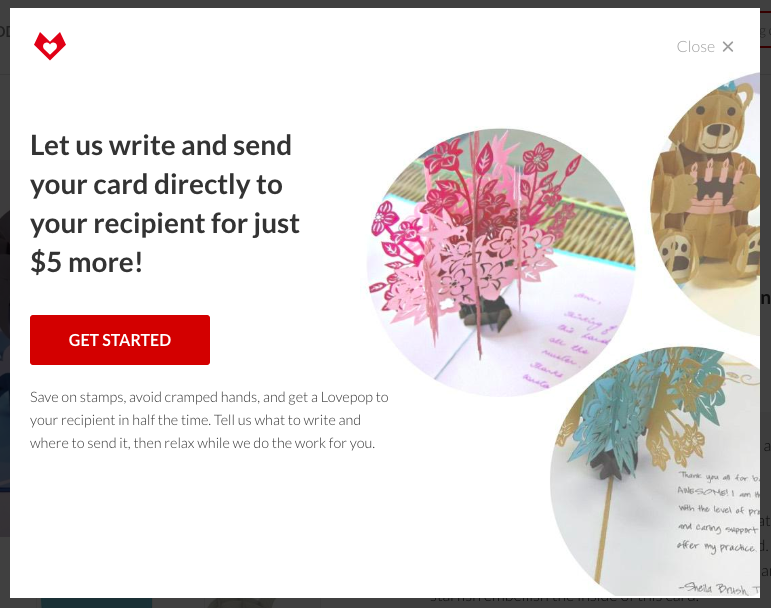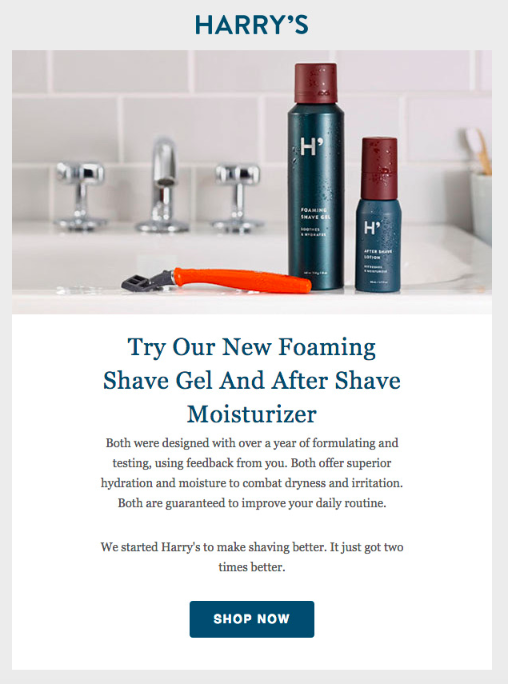11 Ways To Boost eCommerce Revenue With Upsells
Running a successful business with staying power requires maximizing the overall lifetime value of each customer. A higher LTV (which is the total amount a shopper spends at your store over the course of your relationship with them) means your profit will be higher when you deduct your customer acquisition cost (how much you spent on marketing to attract that customer in the first place) and your overhead (like cost of goods and personnel).
Upselling is one of the most effective ways of boosting your LTV, whether by getting shoppers to buy additional products, purchasing add-ons to existing purchases, or upgrading to more expensive items.
When we say upsells, we’re talking about traditional upselling (getting a customer to buy a most expensive product), as well as the related concepts of cross-sells, add-ons, and bundling. Each of these things gives you the ability to increase your average transaction size and leads to higher-value shopping carts.
Upselling is effective because it happens close to the point of sale in the buyer’s journey. They’ve already overcome any potential blockers—they’ve browsed your site enough to learn about your products and decided that you’re trustworthy. They are ready to buy.
If you can convince them that an additional product or upgrade would give them more value, there’s a good chance they’ll go for it. That increases LTV, which in turn means more revenue for you.
How To Make Upselling An Effective Tool In Your Marketing Arsenal
Here are ways you can boost your cart value with upselling, cross-selling, bundling, and add-ons.
1. Make Your Offer Reasonable
Upselling works best when you’re making recommendations that your customers actually want to buy.
If your customer is on the checkout page with an $18 pair of earbuds you’re likely not going to be able to upsell them on a $500 subwoofer. Sure, those items are both audio equipment, but one is way outside what your customer came to the shop to buy. They’re related, but not in a way that makes sense for the buyer.
When you’re making recommendations it’s important to make sure the products are not only related, but complement one another. In this example, you could try a travel headphone case or a headphone adaptor. The products you offer for the upsell need to make sense to the buyer.
2. Leverage The Checkout Page
Upselling on your checkout page is a great idea. The buyers on this page have already made a choice to purchase, and there isn’t really a barrier to overcome outside of deciding whether or not the product being offered is one that they want.
Dollar Shave Club does a great job of this on their checkout page. They offer customers a complementary product that makes sense, and an opportunity to join their monthly subscription service. If the customer decides to add an additional product, the page updates with the new cart total automatically.
3. Upselling With A Popup
Popups are useful in capturing your shoppers’ attention. It’s not hard to ignore the extra stuff on a checkout page when you’re going through the motions of completing a purchase, but they can’t ignore a popup that has to be closed out.
Finch Goods uses their popup to offer add-ons for each purchase.
Just keep in mind that this technique will interrupt the user’s experience, which can potentially upset some of your customers. Be sure to only use popups after your shoppers completed an action (like adding items to their cart), that way it will be less to interrupt them and make them abandon the purchase.
4. Provide A Side-by-side Comparison
Showing customers a side-by-side comparison is one of the easiest ways to feature a higher-priced product. Apple does an excellent job of this by displaying a comparison of their MacBooks in a chat. This gives people a chance to buy the pricier models on the same product page. It can also highlight important differences that might incentivize the customer to go with the more expensive option.
5. Make A Product Recommendation
Recommended products are a vital part of good eCommerce product pages.
You can show products complementary to what the customer is currently viewing. If they’re looking at a mattress, show them pillows and a duvet cover. If they’re looking for a new dutch oven, show them a frying pan.
You can also recommend higher-priced alternatives to what the customer is looking at. If they’re checking out a queen mattress, show them the king. If they’re shopping for stainless steel pots and pans, show them copper.
Kohl’s gives potential customers some great alternatives, most of which are more expensive. They also title their recommendations section “Customers who viewed this item also viewed” to tap into the feeling social-proof.
Adding recommended products to your emails is another great way to boost click-through rates. It can improve conversion rates and potentially increase the average order value of an order.
6. Incentivize Larger Carts With Free Shipping
Customers love free shipping. Shoppers are more likely to buy if you have high prices and give away shipping than if your products are lower priced with shipping included. That’s why 64 percent of eCommerce sellers cite free shipping as their most effective promotional tool.
Setting a threshold for free shipping is an easy way to encourage upsells. If a customer has to hit a certain cart total before being eligible for free shipping they’ll be more likely to tack on additional items to reach that cutoff.
CoffeeForLess even notifies their shoppers how much more they need to spend to get free shipping.
7. Boost Product Value With Additional Services
Even if your customer isn’t interested in additional products they might be amenable to buying services that add value to their original purchase.
For example, some stores offer…
- Product insurance
- Damage coverage
- Extended warranties
- Replacement plans
- Educational or tutorial content
- Speedier delivery
- Installation or set up service
- Customization/personalization options
- Better support plans
Lovepop greeting cards will write a personalized for you for $5.
By adding the option for a hand-written note, Lovepop is not only adding value to the purchase, they’re making the item itself more personal. This helps differentiate their product from other greeting card providers as well.
8. Upselling After The Purchase
After customers make a purchase they will likely receive at least one email to follow up with a receipt. This is a great time to ask for feedback, request a review, or say a simple thank you for their purchase. You can also use these emails to offer coupons to encourage customers to return to your store and buy again.
Post-purchase emails are an amazing opportunity to nudge customers towards making another purchase. You can reinforce the value of their receive purchase and make suggestions for related products that might like as well.
Home Depot‘s post-purchase thank you emails encourage customers to buy using related products and giving them a coupon offer in exchange for signing up for their email newsletter. The email also smartly connects users useful information like their customer support page, price guarantee policy, and online community.
9. Give Substitutes For Sold-out Items
Running out of inventory hurts. Whenever it happens you’re likely doing to lose out on sales.
If one of your products is no longer available due to lack of inventory, you can point customers towards a similar product they might like.
When MetroDeal runs out of an item, for example, they recommend a similar version alongside the “sold out” message. That will hopefully alleviate the potential pain of not having the item in stock.

This lets you cross-sell a similar product and can potentially keep your customers from leaving the site after the negative experience of missing out on the product they initially wanted.
10. Bundle Similar Items Together
Why would a customer buy a can of paint without a brush? If they’re in the market for a new charcoal grill, they’ll need a cover, as well. There are even some products that you can’t use without another. A coloring book needs colored pencils. A radio requires batteries.
Bundling together products your customer would typically use together can be a great way to increase the overall value of their shopping cart. Small accessories often have larger margins, as well.
Amazon is the master of bundling relevant products together. They match items that people typically purchase together and build bundles that are super useful for the customer.
11. Offer Early Access To Previous Customers
Everyone likes an exclusive deal. When you’re coming out with a new product, offer it to existing customers first. This is a great way to generate interest in your new product from people who’ve already had a positive experience with your brand.
Harry’s did this with a simple email about their new shave gel and moisturizer. Just remember to keep the messaging straightforward and the CTA clear.
Find The Right Kind Of Upsells For Your Customer
Each customer is going to react differently to the various upsell techniques you use. Test out these techniques to find out which ones work best.
Research your buyer personas and customer research to identify which tactics are most likely to work. Set up experiments to validate which ones your customers prefer and roll that technique out to your entire store. You’ll be seeing a revenue boost in no time!
This is a guest post from Beka Rice, head of product at Jilt. Jilt helps e-commerce stores send effective automated lifecycle emails and boost revenue by better communicating with customers. For more helpful tips on e-commerce marketing, check out the Jilt blog.
Latest posts by FollowUp (see all)
- CRM Integrations: Sometimes Less Is More - March 18, 2021
- Becoming an Account Executive in 5 Totally-Doable Steps - January 29, 2021
- 3 Bad Sales Techniques You Should Give Up Right Now - December 28, 2020










